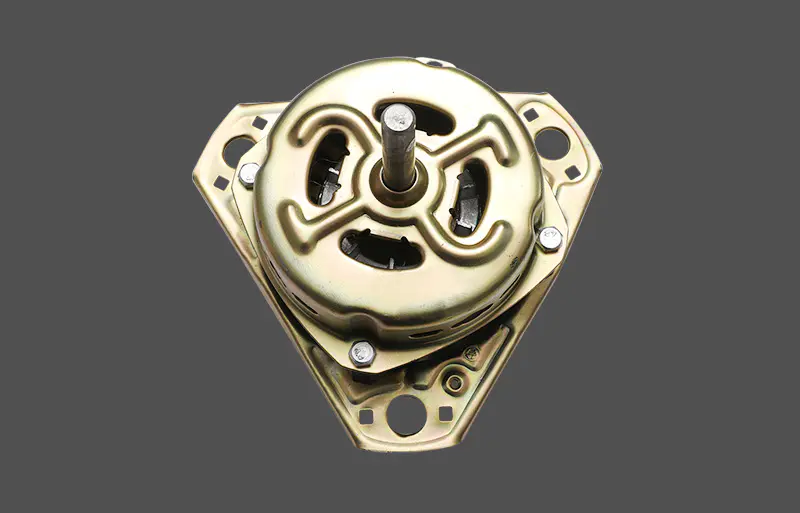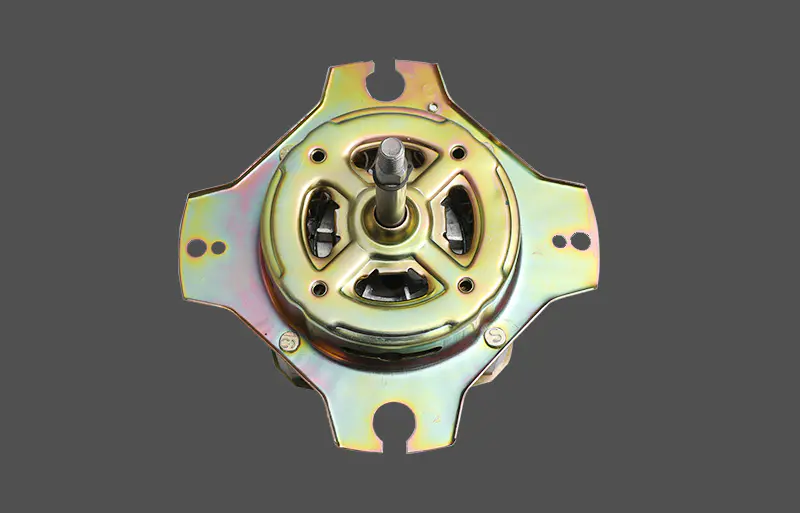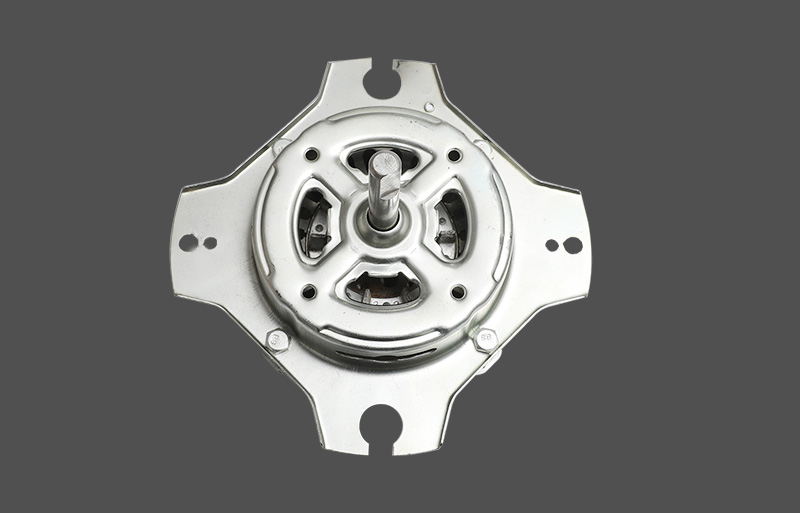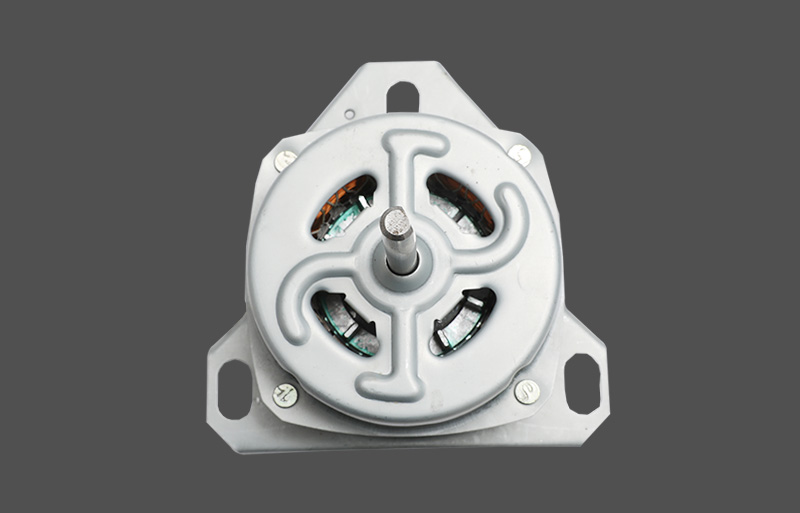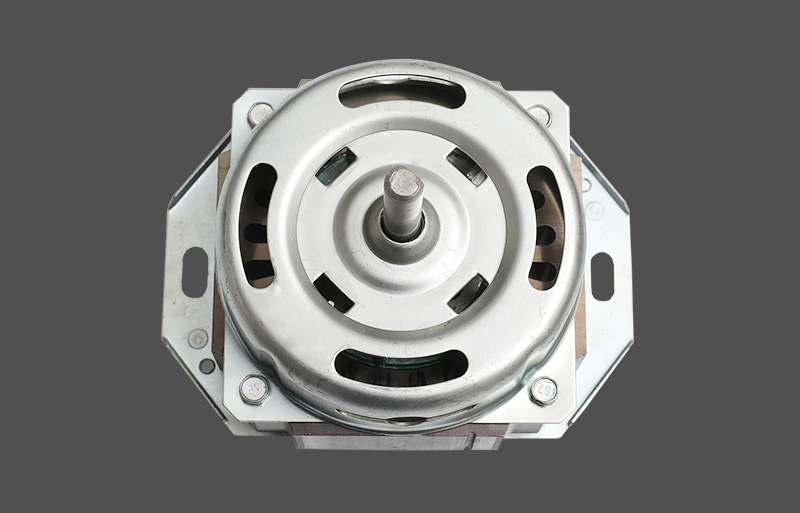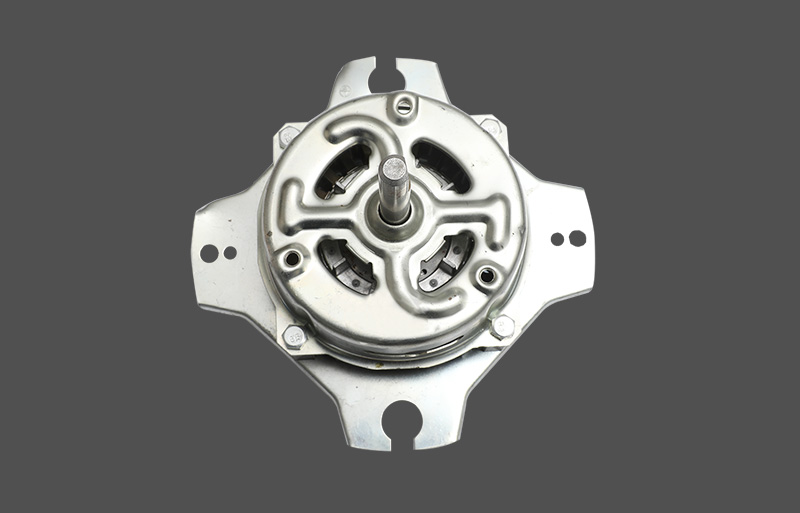The washing motor of a washing machine is an important core component of the washing machine, and its control method directly affects the performance, energy efficiency and user experience of the washing machine. With the development of technology, the control technology of washing motors has become increasingly diversified and intelligent.
Direct starting control of AC asynchronous motors
The most common type of washing motor in traditional washing machines is AC asynchronous motors. The motor control method is simple and adopts direct starting control. Direct starting is to connect the motor directly to the power supply, and the motor runs according to the power supply frequency and voltage, and the speed is fixed. This control method has low cost and simple structure, but the starting current is large, the mechanical impact is obvious, and it causes a large load on the motor and the power grid, which is not conducive to energy saving and extending the life of the motor.
Direct starting is suitable for low-end and basic washing machines to meet simple washing needs. However, modern washing machines require multi-speed regulation and variable frequency energy saving. The shortcomings of direct starting are gradually emerging and are gradually replaced by more advanced control methods.
Star-delta starting control method
Star-delta starting is a motor control method that reduces the starting current and is suitable for asynchronous motors. When starting, the motor windings are connected in a star shape to reduce the starting voltage, reduce the starting current and mechanical impact. After reaching a certain speed, switch to a triangle connection to achieve normal operating voltage and speed.
This control method effectively protects the motor, reduces the impact of the power grid during startup, and improves the life and stability of the motor. The disadvantages are that the control circuit is complex, there is current fluctuation during startup switching, and the startup speed is limited, and smooth speed regulation cannot be achieved.
Variable frequency speed control (VFD)
Variable frequency speed control technology is the mainstream method for controlling the washing motor of modern washing machines. The motor power supply frequency and voltage are adjusted by the frequency converter (VFD) to achieve continuous adjustable motor speed. Variable frequency control is not only energy-saving and efficient, but also can achieve soft start and soft stop, reduce mechanical impact and noise, and improve washing effect.
Variable frequency control can be used with a variety of motor types, such as asynchronous motors and brushless DC motors (BLDC). Its advantages include:
Precisely control the speed to achieve multi-speed washing programs;
Save electricity and reduce motor heating;
Improve equipment reliability and user experience;
Compatible with intelligent control systems to achieve automatic adjustment of washing intensity.
Variable frequency controllers usually integrate motor protection functions, such as overcurrent, overvoltage, and overheating protection, to extend the life of the motor.
Brushless DC motor (BLDC) control
Brushless DC motors are becoming a new trend in washing machine motors due to their high efficiency, high responsiveness and low noise characteristics. BLDC motors do not require brushes, reduce mechanical wear and are easy to maintain. The core of its control is an electronic commutator, which achieves precise commutation through sensors or sensorless technology.
The control methods of BLDC motors include:
Hall sensors detect rotor position for commutation and speed control;
Sensorless control algorithms achieve position inference through back-EMF feedback;
PWM (pulse width modulation) technology adjusts motor current and speed.
This control method supports high efficiency and energy saving, smooth operation, fast response speed, and is suitable for the diverse washing needs of smart washing machines.
Pulse width modulation (PWM) technology
PWM control is a technology widely used in washing motor speed regulation. It achieves motor speed control by adjusting the duty cycle of the motor supply voltage. PWM technology has the advantages of high speed regulation accuracy, fast response and high efficiency.
In AC asynchronous motors and BLDC motors, PWM is used to control the current waveform and frequency, thereby finely controlling the motor output torque and speed. The flexibility of PWM enables the washing machine to adjust the speed according to different washing programs, achieving energy saving and improving washing quality.
Soft start and soft stop control
During the start and stop process of the washing motor, current shock and mechanical shock are the main causes of damage to the motor and transmission mechanism. Soft start and soft stop technology achieves smooth acceleration and deceleration by gradually increasing or decreasing the motor voltage and frequency.
This control method not only protects the motor and mechanical structure, but also effectively reduces noise and vibration, and improves the service life of the washing machine and user comfort. Soft start is often used in conjunction with variable frequency control and has become an important control method for modern washing machines.




